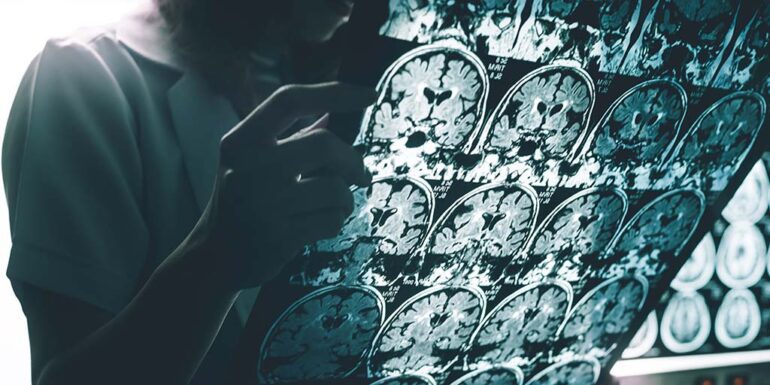TL;DR:
- Neurodegenerative diseases pose significant challenges, causing progressive nerve system deterioration.
- Machine learning methods have gained prominence in the study of Alzheimer’s, Parkinson’s, and other prevalent neurodegenerative diseases.
- Imaging and functional data are primary focuses, aiding in disease diagnosis and prognosis.
- Machine learning methods show a 185% increase in usage from 2016 to 2020.
- The quest for prognostic biomarkers and novel therapeutics intensifies.
Main AI News:
Neurodegenerative diseases, insidious age-related conditions leading to the gradual decay of the central and peripheral nervous systems, present a formidable challenge to the medical community. As these ailments progress, they inflict debilitating symptoms, ultimately robbing patients of their independence and, sadly, leading to fatality.
Among the most prevalent neurodegenerative diseases are Alzheimer’s disease, Parkinson’s disease, multiple sclerosis, amyotrophic lateral sclerosis, and Huntington’s disease. In the United States alone, Alzheimer’s and Parkinson’s stand as the most common neurodegenerative conditions, affecting 6.2 million and one million Americans, respectively. As life expectancy rises worldwide, experts foresee a surge in the prevalence of these diseases.
To confront these incurable afflictions, grasping the intricacies of their pathogenesis, establishing precise diagnostic and prognostic tools, and uncovering targeted therapies are of paramount importance. Enter machine learning methods—a burgeoning trend in neurodegenerative disease research. By rapidly and accurately analyzing disease-related data, machine learning supports diagnostic breakthroughs and therapeutic innovations.
A recent scoping review delves into the utility of machine learning methods concerning the five most prevalent neurodegenerative diseases—Alzheimer’s, multiple sclerosis, amyotrophic lateral sclerosis, Parkinson’s, and Huntington’s disease.
The study design entailed a comprehensive search of scientific databases to identify research leveraging machine learning methods for the diagnosis, prognosis, and treatment prediction of these diseases. Only studies published between January 2016 and December 2020 were considered, resulting in 1,485 qualifying out of 4,471 screened.
Information extracted from each study encompassed neurodegenerative disease type, publication year, sample size, machine learning algorithm data type, primary clinical goal, and machine learning method type. Qualitative and quantitative analyses were both conducted on the results.
The analysis revealed a noteworthy uptick in the use of machine learning methods over the years. From a modest 172 studies in 2016, the number escalated to an impressive 490 in 2020, reflecting a staggering 185% increase in the adoption of this technology. Notably, Alzheimer’s and Parkinson’s stood as the most extensively studied neurodegenerative diseases utilizing machine learning methods.
Among the studied data types, imaging ranked as the most commonly analyzed, followed by functional, clinical, biospecimen, genetic, electrophysiological, and molecular data. In Alzheimer’s, imaging data predominated, while Parkinson’s saw the highest use of functional data, accounting for 68% and 76%, respectively.
Disease diagnosis emerged as the primary clinical goal for which machine learning methods were employed, closely followed by disease prognosis and treatment effect prediction. Notably, imaging data remained the most frequently used for diagnosis and prognosis, while functional data dominated treatment effect prediction.
A comprehensive array of 2,734 machine learning methods was utilized across the selected studies, with support vector machine, random forest, and convolutional neural network among the most frequently noted. Additionally, the review identified 322 unique methods.
The significance of this scoping review is profound, as it highlights the surging application of machine learning methods in neurodegenerative disease research. Scientists attribute this growing popularity to the potential of these methods to transform the clinical trajectory of these debilitating conditions.
Despite the existence of treatments that alleviate certain physical and cognitive symptoms related to neurodegenerative diseases, there remains a glaring lack of therapies capable of slowing the inexorable progression of neuronal death. Thus, the urgency to expand the application of machine learning methods to identify prognostic biomarkers and discover novel therapeutics for these disorders cannot be overstated.
Conclusion:
The growing implementation of machine learning in neurodegenerative disease research signifies a transformative trend. These advancements open up new possibilities for the medical market, with potential diagnostic and therapeutic breakthroughs on the horizon. The demand for innovative solutions to tackle these debilitating diseases is likely to drive investments and collaborations in the healthcare industry, positioning businesses to seize opportunities in this evolving landscape.

